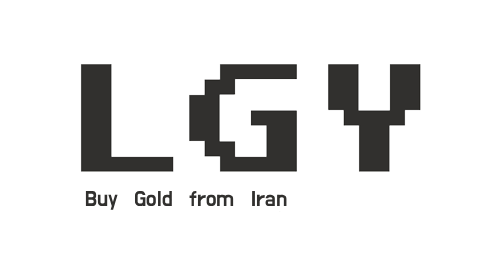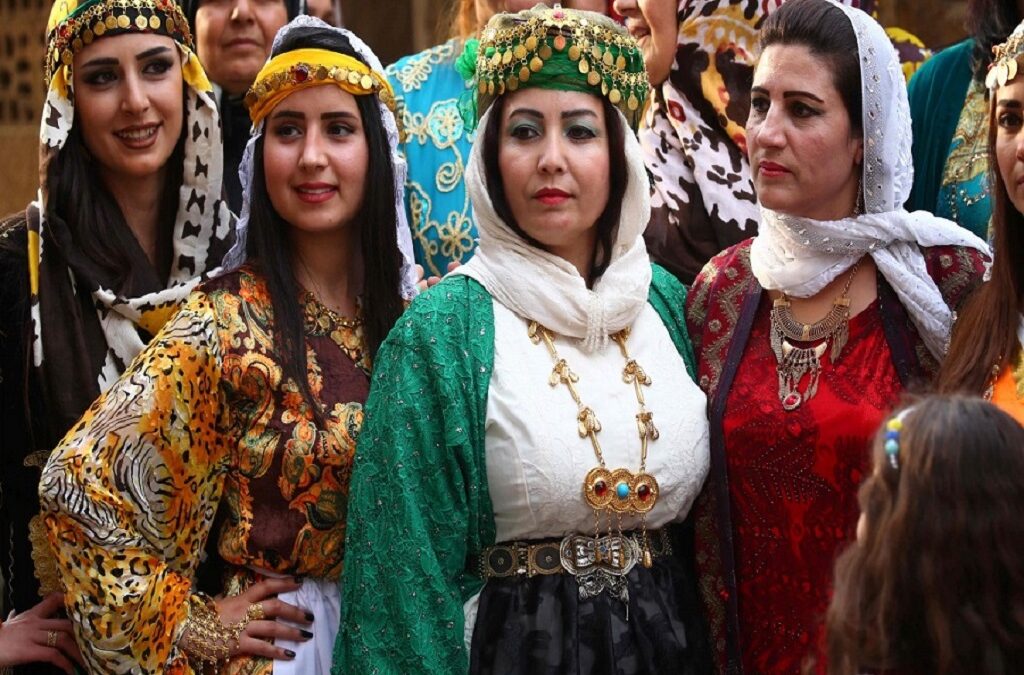
Modern Minimalism in Iranian Jewelry
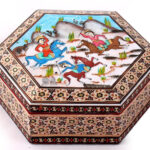
The Art of Enamel in Iranian Jewelry
Regional Variations and Meanings
Iran’s rich cultural tapestry is reflected not only in its art, literature, and architecture but also in its jewelry traditions. Across different regions of Iran, jewelry carries unique meanings and serves as a cultural marker of identity, heritage, and social status. The variations in styles, materials, and symbolism of jewelry reflect the diversity of ethnic groups, historical influences, and local traditions.
In this guide, we will explore the cultural significance of jewelry in various regions of Iran, examining the distinctive styles and meanings attached to jewelry in Kurdistan, Tabriz, Southern Iran, Khorasan, Baluchistan, and other key regions.
1. Kurdistan: Silver Jewelry and Tribal Identity
In the Kurdish region of western Iran, jewelry plays an essential role in expressing tribal identity and social status. Kurdish jewelry is typically made of silver and often features coin decorations, intricate designs, and tribal motifs. Silver jewelry holds particular importance due to its association with protection and strength.
Key Jewelry Styles and Their Significance
- Silver Coin Necklaces: In Kurdish culture, silver necklaces adorned with coins are symbols of prosperity and family heritage. These necklaces are passed down through generations and are believed to protect the wearer. The coins often carry historical or tribal significance.
- Silver Belts: A distinctive element of Kurdish jewelry, silver belts are worn around the waist and are typically decorated with geometric patterns and dangling coins. The belt represents strength and is considered a status symbol among Kurdish women.
- Headpieces and Hair Ornaments: Kurdish brides wear elaborate headpieces made of silver and coins, often with delicate chains that drape over the hair. These headpieces are symbols of beauty and fertility and are typically worn during weddings and festivals.
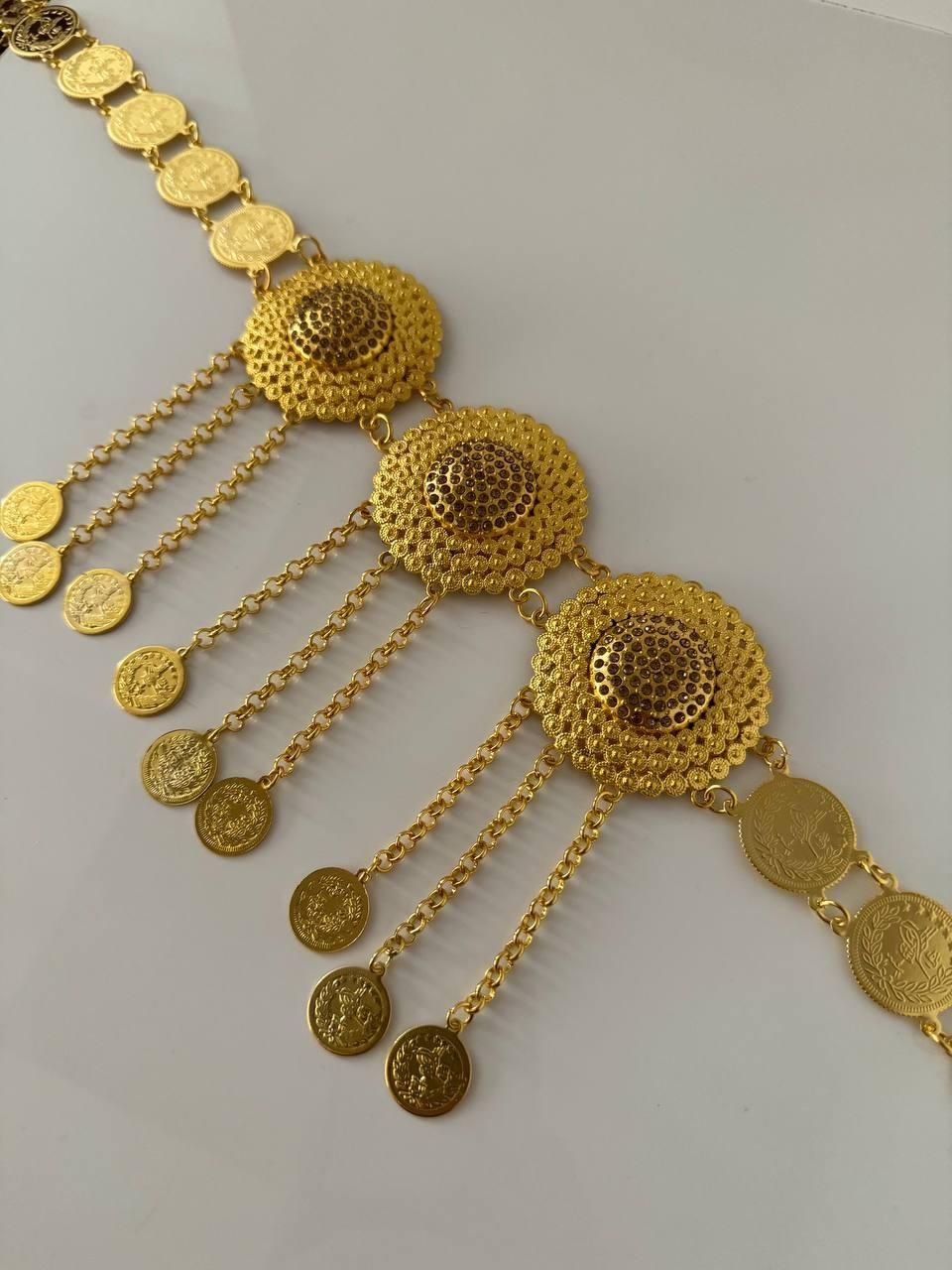
Gold Belts
Symbolism
Kurdish jewelry reflects the community’s connection to tribal traditions and emphasizes strength and protection. The use of silver and coins also highlights the value of historical continuity and family honor within the community.
2. Tabriz and Azerbaijan: Opulent Gold Jewelry and Traditional Heritage
In Tabriz and the Azerbaijan region of northwestern Iran, jewelry is an important symbol of wealth, social status, and family prestige. The region’s jewelry is known for its heavy use of gold, often in the form of layered necklaces, thick bracelets, and large earrings. The emphasis on gold is tied to the historical role of Tabriz as a center of trade and commerce.
Key Jewelry Styles and Their Significance
- Gold Coin Jewelry: Necklaces and bracelets featuring gold coins are popular in Tabriz, symbolizing wealth and prosperity. These coins are not only decorative but also serve as a form of investment and financial security for the family.
- Gold Bangles and Bracelets: Women in Tabriz often wear multiple gold bangles as a sign of their family’s affluence. These bangles are sometimes engraved with intricate patterns and are given as gifts during significant life events, such as weddings.
- Gold Headpieces: Brides in Tabriz may wear golden crowns or headpieces adorned with gemstones and coins, symbolizing nobility and honor. These headpieces are typically reserved for special occasions and are passed down within families.
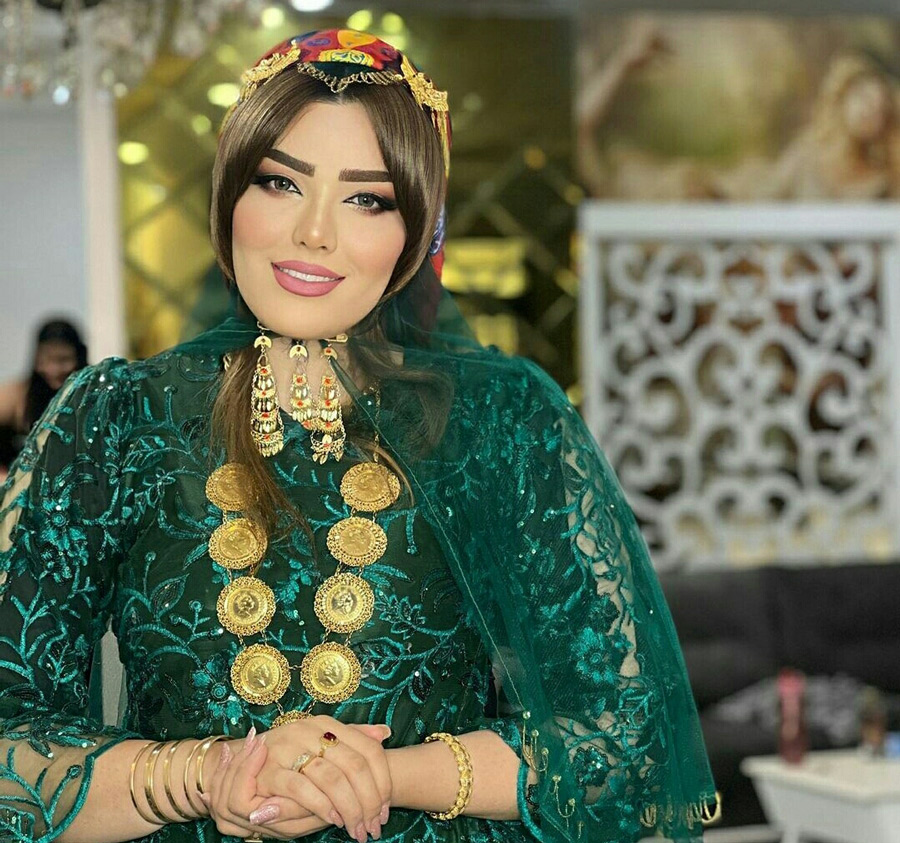
The Bride’s Jewelry
Symbolism
In Tabriz, the emphasis on gold jewelry reflects the region’s connection to trade routes and its role as a historical center of commerce. Gold is seen as a symbol of prosperity, family wealth, and cultural pride.
3. Southern Iran and the Persian Gulf: Pearl Jewelry and Coastal Traditions
The southern regions of Iran, particularly along the Persian Gulf coast, have a long history of pearl diving and trade. As a result, pearl jewelry is a significant aspect of the cultural identity of communities in cities like Bushehr and Bandar Abbas. Pearls are valued for their purity and are often incorporated into bridal jewelry and daily adornments.
Key Jewelry Styles and Their Significance
- Pearl Necklaces and Earrings: Brides and women in southern Iran wear elegant pearl necklaces and dangling pearl earrings, often combined with gold accents. Pearls are considered symbols of purity, wealth, and beauty and are associated with the region’s maritime heritage.
- Gold and Pearl Hairpieces: Women in coastal regions may wear hairpieces decorated with pearls and gold, which are particularly common during weddings. These pieces symbolize the bride’s connection to the sea and the community’s pearl-diving tradition.
- Shell and Coral Jewelry: Alongside pearls, jewelry made from shells and coral is also popular, reflecting the connection between the coastal communities and the marine environment.
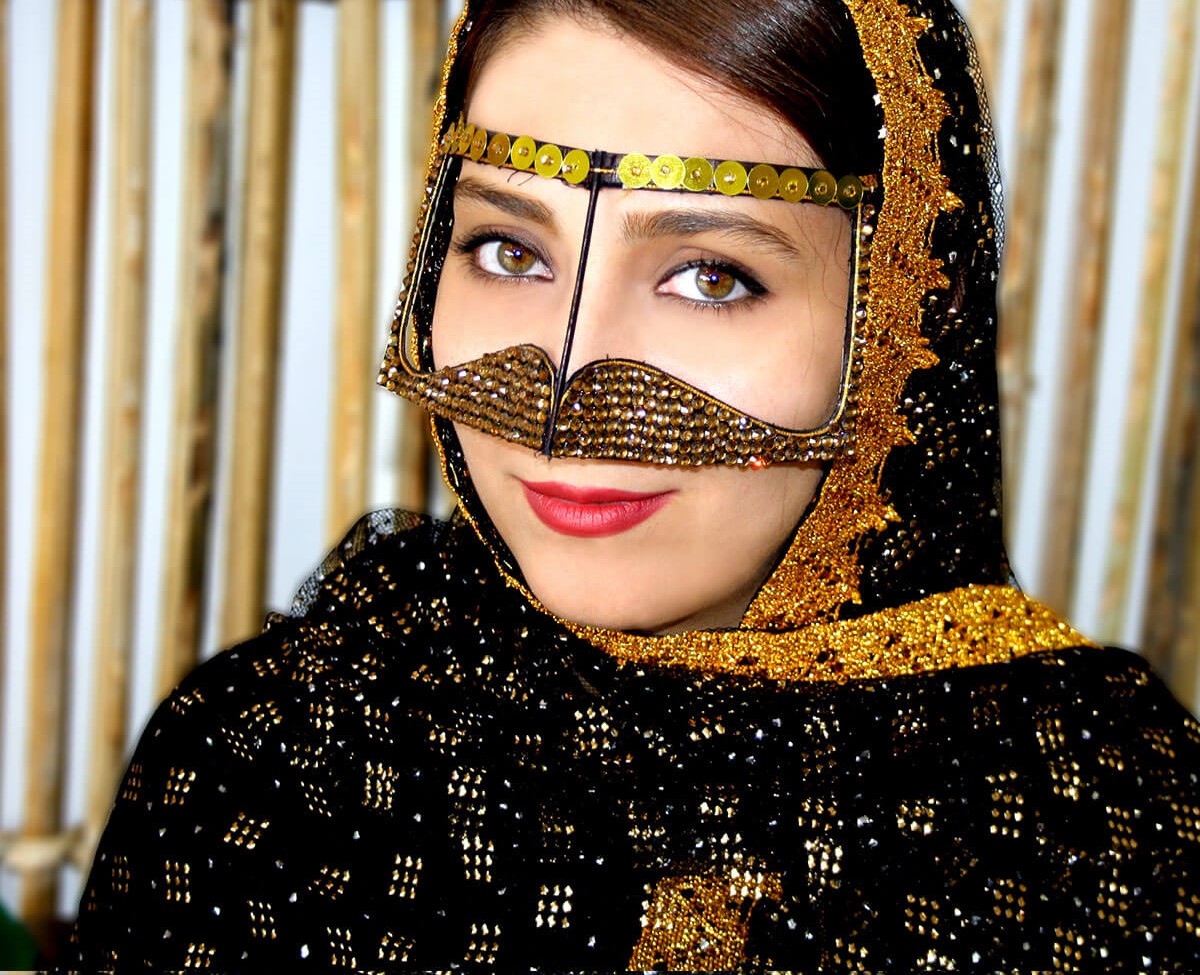
Golden Burqa
Symbolism
Pearls are deeply tied to the region’s identity and represent purity, beauty, and prosperity. The prevalence of pearl jewelry reflects the economic and cultural importance of pearl diving and trade in the Persian Gulf region.
4. Khorasan: Cultural Diversity and Gemstone Jewelry
The Khorasan region, located in northeastern Iran, is known for its cultural diversity and historical significance as part of the Silk Road. Jewelry from Khorasan often incorporates precious and semi-precious stones, reflecting the region’s historical role in trade and craftsmanship.
Key Jewelry Styles and Their Significance
- Gemstone Rings and Bracelets: Khorasan is famous for its use of turquoise, agate, and onyx in jewelry. Rings and bracelets featuring engraved gemstones are popular, often adorned with Persian calligraphy or symbolic motifs. These stones are believed to bring protection and spiritual clarity to the wearer.
- Stone-Studded Earrings and Pendants: Earrings and pendants in Khorasan are often set with turquoise or red agate stones, which are prized for their protective and healing properties. The designs often reflect influences from the Silk Road and neighboring cultures.
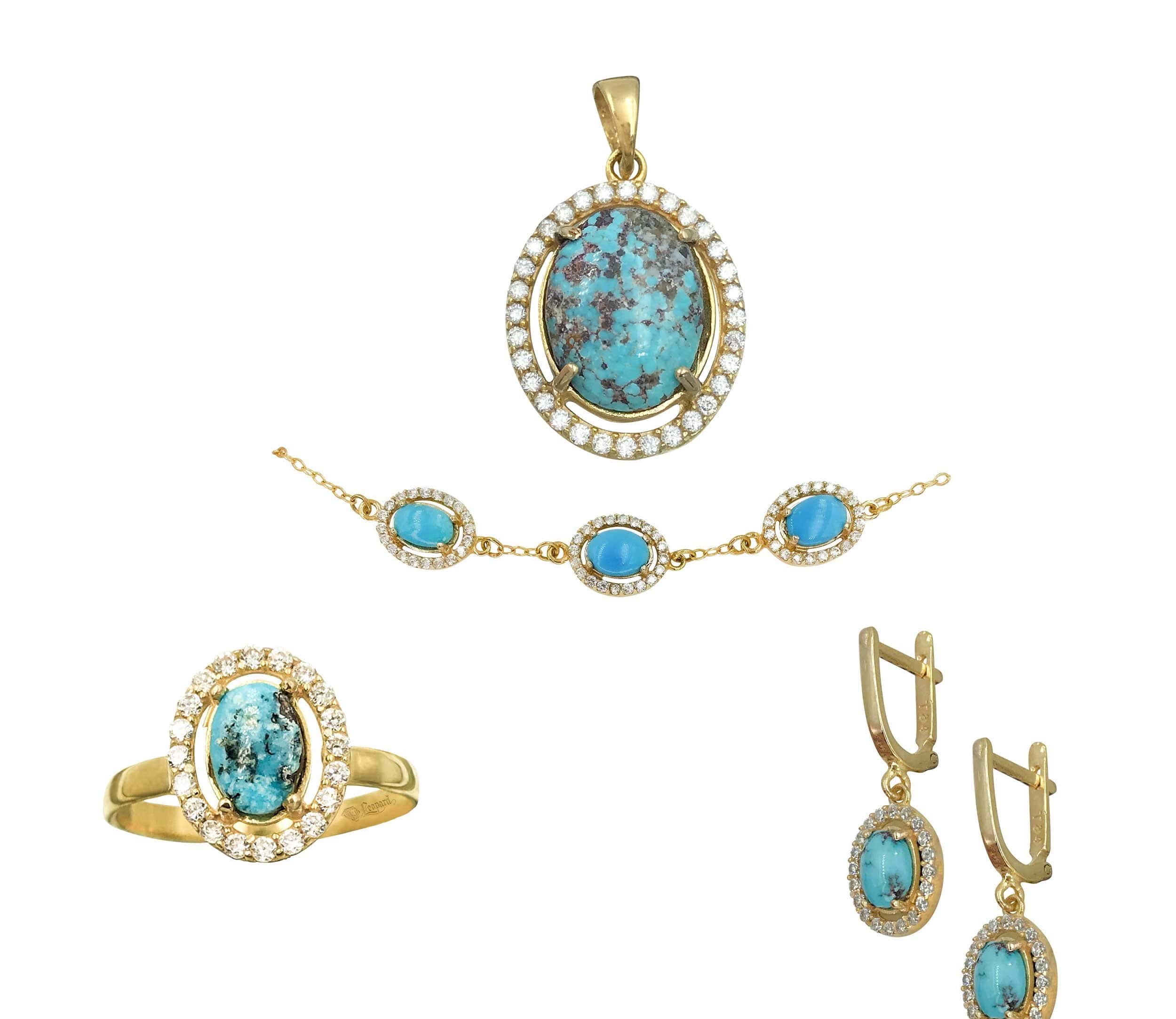
Gold and Turquoise Necklaces
Symbolism
In Khorasan, gemstones are not only valued for their aesthetic appeal but also for their spiritual meanings. Turquoise is believed to protect against negative energy, while agate symbolizes strength and resilience. The use of these stones reflects the region’s connection to ancient trade routes and cultural exchange.
5. Baluchistan: Tribal Jewelry and Symbolic Adornments
In Baluchistan, the southeastern region of Iran, jewelry is closely tied to tribal identity and cultural symbolism. Baluchi jewelry is known for its distinctive designs, featuring bold patterns, large ornaments, and the use of coins and beads.
Key Jewelry Styles and Their Significance
- Silver Jewelry with Coins: Women in Baluchistan often wear large, ornate silver necklaces and bracelets adorned with coins. These pieces are not only decorative but also serve as a symbol of tribal affiliation and social status.
- Colorful Beaded Jewelry: Baluchi women wear colorful beaded necklaces and earrings, often made from a combination of glass beads, shells, and semi-precious stones. These pieces are designed to showcase the vibrancy and creativity of Baluchi culture.
- Nose Rings and Earrings: Nose rings are a common adornment among Baluchi women, symbolizing beauty and femininity. Earrings are often large and bold, reflecting the region’s love for elaborate designs.
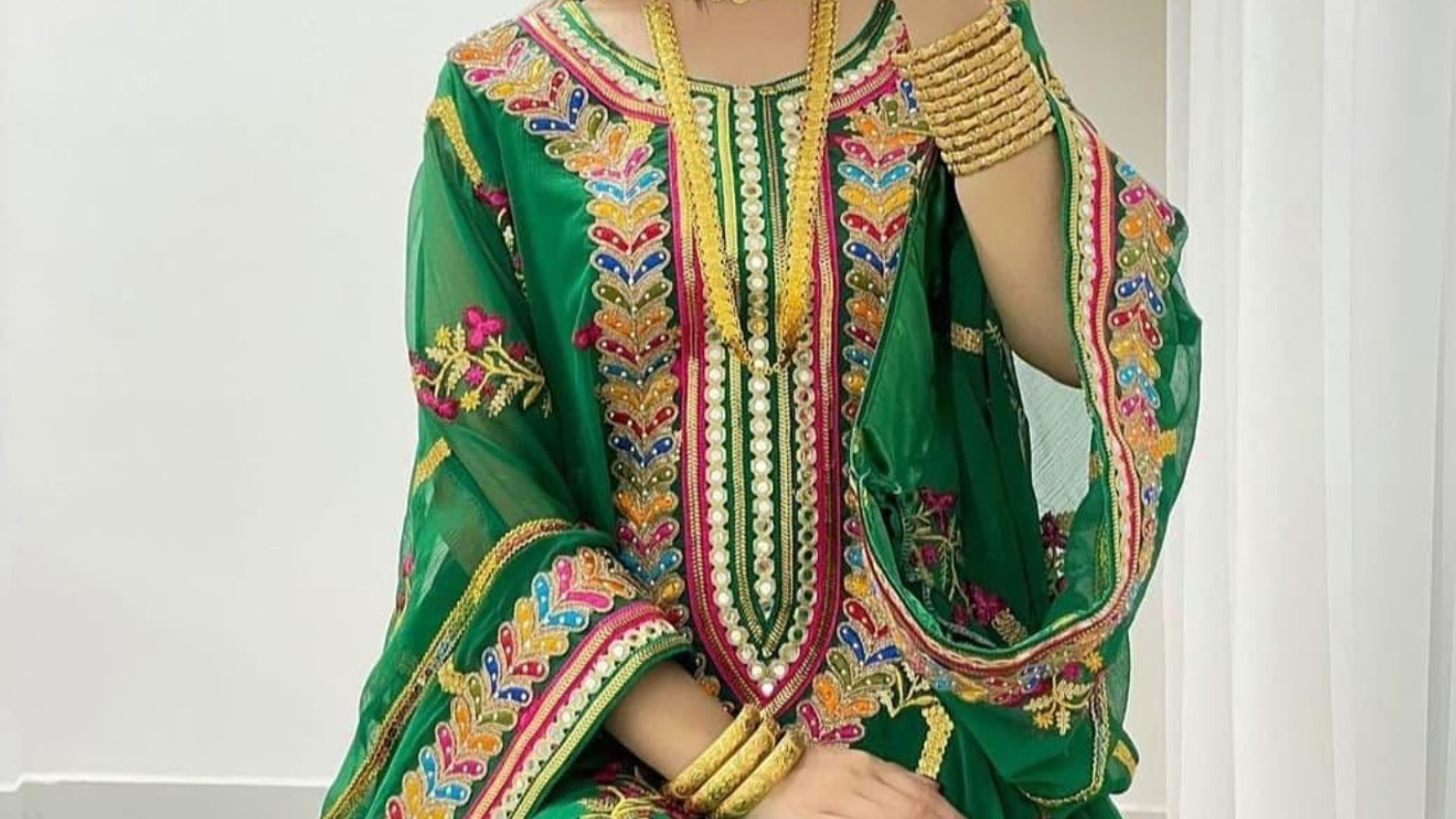
Balochi local dress
Symbolism
In Baluchistan, jewelry is an expression of tribal affiliation and carries deep symbolic meanings related to beauty, honor, and family connections. The use of silver and coins reflects the community’s ties to trade routes and the importance of historical continuity.
6. Fars Province and Shiraz: Poetic and Artistic Jewelry Traditions
The city of Shiraz in Fars Province is known as the cultural capital of Iran, famous for its artistic heritage and literary traditions. Jewelry from this region often reflects the city’s connection to Persian poetry, with designs that incorporate calligraphy, floral motifs, and gemstones like turquoise and ruby.
Key Jewelry Styles and Their Significance
- Calligraphic Pendants and Bracelets: Shirazi jewelry often features Persian calligraphy inscribed on gold or silver, with verses from the works of Hafez, Saadi, or Rumi. These inscriptions symbolize love, wisdom, and spiritual reflection.
- Gemstone Necklaces and Earrings: Turquoise and ruby are common gemstones used in Shirazi jewelry, with floral patterns and geometric designs inspired by Persian gardens and architecture. These stones are seen as symbols of protection and prosperity.
- Gold Bangles and Rings: Brides in Shiraz often wear gold bangles and rings with engraved designs or poetic inscriptions, representing their connection to the city’s literary heritage.
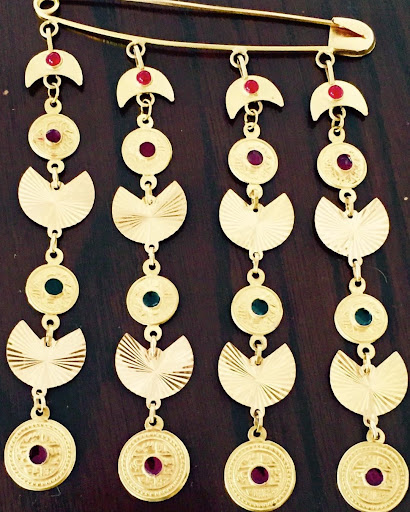
Handmade Jewelry in the Qashqai tribe
Symbolism
In Fars Province, jewelry is a reflection of the region’s deep connection to art, poetry, and spirituality. The use of calligraphy and gemstones highlights the importance of intellectual and emotional expression through art, making Shirazi jewelry both aesthetically and culturally significant.
Conclusion: A Rich Tapestry of Regional Jewelry Traditions in Iran
The diversity of jewelry traditions across Iran reflects the country’s rich cultural heritage and the unique identity of each region. From the silver coin necklaces of Kurdistan to the pearl jewelry of Southern Iran and the calligraphic pendants of Shiraz, each region offers its distinctive style and symbolic meaning.
At LetsGoYelo, we celebrate these rich traditions by offering a curated collection of handcrafted Iranian jewelry inspired by regional customs and cultural heritage. Explore our range of unique pieces and experience the beauty and meaning of Iran’s diverse jewelry traditions!
